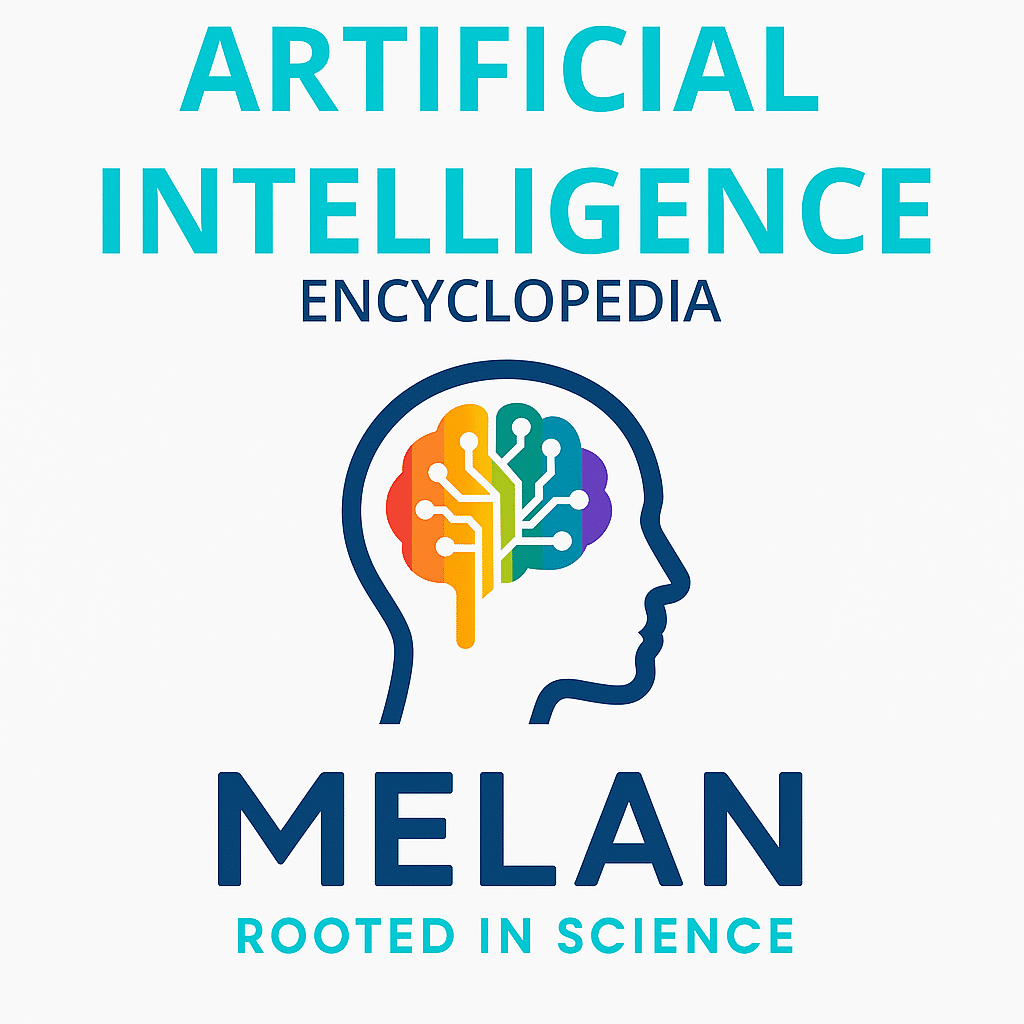Computer Vision refers to artificial intelligence technology that enables computers to interpret, analyze, and understand visual information from digital images, videos, and real-world environments. This field combines machine learning, image processing, and pattern recognition to give machines the ability to “see” and make decisions based on visual data, powering applications from facial recognition and autonomous vehicles to medical imaging and augmented reality.
Computer Vision
|
|
|---|---|
| Category | Artificial Intelligence, Computer Science |
| Subfield | Machine Learning, Image Processing, Pattern Recognition |
| Primary Techniques | Convolutional Neural Networks, Object Detection, Feature Extraction |
| Key Applications | Autonomous Vehicles, Medical Imaging, Facial Recognition |
| Core Challenges | Lighting Variations, Occlusion, Real-time Processing |
| Sources: IEEE Computer Vision, International Journal of Computer Vision, Computer Vision Foundation | |
Other Names
Machine Vision, Visual AI, Image Recognition, Visual Computing, Computational Vision, Digital Vision, Automated Visual Inspection, Visual Intelligence
History and Development
Computer vision emerged in the 1960s with early work by Larry Roberts at MIT, who developed methods for extracting 3D information from 2D images. The field advanced through the 1970s and 1980s with contributions from researchers like David Marr at MIT, who proposed computational theories of vision, and Hans Moravec at Stanford, who worked on stereo vision. The introduction of convolutional neural networks by Yann LeCun in the 1990s revolutionized the field, though widespread adoption didn’t occur until the 2010s. The breakthrough came in 2012 when Alex Krizhevsky’s AlexNet dramatically improved image classification accuracy, leading to rapid advances in deep learning approaches that now dominate computer vision applications.
How Computer Vision Works
Machine vision systems process visual data through multiple stages, starting with image acquisition from cameras or sensors that convert light into digital pixels. Preprocessing steps enhance image quality by adjusting brightness, contrast, and removing noise. Feature extraction algorithms identify important visual elements like edges, corners, textures, and shapes within the image. Modern systems use convolutional neural networks that automatically learn relevant features through training on large datasets. The system then applies pattern recognition to classify objects, detect specific items, or understand spatial relationships. Finally, the results are interpreted and used for decision-making, whether that’s identifying a person’s face, navigating a vehicle, or diagnosing medical conditions.
Variations of Computer Vision
Image Classification
Systems that categorize entire images into predefined classes, such as determining whether a photo contains a cat, dog, or car, commonly used in photo organization and content moderation.
Object Detection and Recognition
Technology that identifies and locates specific objects within images, drawing bounding boxes around detected items and labeling them, essential for autonomous vehicles and surveillance systems.
Semantic Segmentation
Advanced analysis that assigns every pixel in an image to a specific category, creating detailed maps of visual scenes used in medical imaging and autonomous navigation for precise understanding of environments.
Real-World Applications
Machine vision powers autonomous vehicles by identifying roads, traffic signs, pedestrians, and other vehicles to enable safe navigation. Medical imaging systems use computer vision to detect tumors in X-rays, analyze retinal scans for disease, and assist surgeons during operations. Smartphone cameras employ computer vision for facial recognition unlocking, portrait mode photography, and augmented reality filters. Retail systems use it for inventory management, checkout-free shopping experiences, and quality control in manufacturing. Security and surveillance systems rely on computer vision for facial recognition, behavior analysis, and threat detection in airports and public spaces.
Computer Vision Benefits
Computer vision processes visual information far faster than humans, analyzing thousands of images per second with consistent accuracy that doesn’t diminish due to fatigue or distraction. It can detect subtle patterns and anomalies that human eyes might miss, leading to earlier disease detection in medical scans and improved quality control in manufacturing. The technology operates continuously without breaks, enabling 24/7 monitoring and surveillance applications. Computer vision systems can process multiple visual streams simultaneously and work in challenging conditions like low light or harsh environments where human vision would be limited. They also provide objective, reproducible results that eliminate human subjectivity in visual analysis tasks.
Risks and Limitations
Technical Performance and Robustness Issues
Computer vision systems struggle with varying lighting conditions, unusual viewing angles, and partial occlusion of objects, often failing in scenarios that differ significantly from their training data. Adversarial attacks can fool systems with small, intentionally crafted changes to images that are invisible to humans but cause misclassification. Real-time processing requirements strain computational resources, especially for high-resolution video streams or complex analysis tasks.
Privacy Invasion and Surveillance Concerns
Facial recognition and tracking capabilities raise serious privacy concerns as systems can identify and monitor individuals without consent in public spaces. Biometric data collection through computer vision creates permanent digital fingerprints that can be misused or stolen. The technology enables unprecedented surveillance capabilities that governments and corporations can abuse to monitor citizens and employees.
Algorithmic Bias and Discrimination
Computer vision systems often exhibit racial, gender, and age biases due to unrepresentative training datasets, leading to higher error rates for minorities and women. Facial recognition systems have documented accuracy disparities across demographic groups, potentially causing discriminatory outcomes in hiring, law enforcement, and access control. Historical biases in training data perpetuate and amplify existing social inequalities through automated decision-making systems.
Regulatory Frameworks and Compliance Requirements
The European Union’s AI Act specifically addresses computer vision applications in biometric identification, requiring strict oversight for real-time facial recognition in public spaces. GDPR regulations affect how computer vision systems collect and process personal visual data, requiring explicit consent and data protection measures. Several U.S. cities and states have banned or restricted facial recognition technology, while federal agencies develop guidelines for responsible computer vision deployment.
Industry Standards and Stakeholder Pressures
Tech companies face pressure from civil rights organizations, privacy advocates, and employees to limit facial recognition development and deployment. Law enforcement agencies push for expanded computer vision capabilities while facing public backlash over surveillance overreach. These regulatory changes stem from legal pressure following wrongful arrests based on facial recognition errors, market demands for ethical AI from consumers and businesses, reputation management after privacy scandals, and investor concerns about liability and regulatory risk. Healthcare providers, automotive manufacturers, and security companies drive policy development for their respective applications, while privacy advocates and civil liberties organizations work to limit invasive uses. The intended outcomes include protecting individual privacy rights, reducing algorithmic discrimination, ensuring accuracy in critical applications, and establishing clear boundaries for surveillance technology. Initial evidence shows increased adoption of bias testing protocols, development of privacy-preserving computer vision techniques, and growing requirements for human oversight in high-stakes applications.
Current Debates
Facial Recognition Bans vs. Public Safety
Cities and states debate whether to ban facial recognition technology entirely or allow limited use for specific purposes like finding missing children. Law enforcement argues these tools are essential for public safety and crime prevention, while civil liberties advocates warn about the chilling effect on privacy and the risk of false identifications leading to wrongful arrests.
Deepfake Detection and Content Authenticity
Researchers race to develop computer vision systems that can detect AI-generated fake videos and images, while simultaneously improving the technology that creates increasingly realistic deepfakes. This arms race raises questions about the future of visual truth and the role of technology platforms in verifying authentic content.
Autonomous Vehicle Liability and Decision-Making
Legal experts and technologists debate who bears responsibility when computer vision systems in self-driving cars make fatal errors. Questions arise about whether these systems should be programmed with explicit ethical guidelines about whom to protect in unavoidable accident scenarios, and how to handle edge cases that weren’t covered in training data.
Medical AI Accountability and Professional Standards
Healthcare professionals debate the appropriate level of computer vision automation in medical diagnosis, balancing the technology’s potential to improve accuracy and speed against the need for physician oversight and accountability. Disagreements persist about liability when AI systems miss diagnoses or provide incorrect recommendations.
Workplace Surveillance and Employee Rights
Employers increasingly use computer vision to monitor employee behavior, productivity, and safety compliance, sparking debates about worker privacy rights and the psychological effects of constant visual monitoring. Labor advocates argue for strict limits on workplace surveillance, while employers claim the technology improves safety and efficiency.
Media Depictions of Computer Vision
Movies
- Minority Report (2002): Features advanced computer vision systems that scan retinas for identification and track individuals throughout the city, exploring themes of surveillance, privacy, and predictive policing
- Enemy of the State (1998): Will Smith’s character is tracked by government surveillance systems using computer vision and facial recognition, highlighting concerns about privacy invasion and government overreach
- The Dark Knight (2008): Batman uses a city-wide surveillance system with computer vision capabilities to track the Joker, examining the moral implications of mass surveillance even for good intentions
- I, Robot (2004): Robots use computer vision to navigate and interact with their environment, including recognizing humans and interpreting visual commands from Will Smith’s character Detective Spooner
- Ex Machina (2014): The android Ava (Alicia Vikander) uses sophisticated computer vision to read facial expressions and body language, demonstrating how AI might use visual cues to manipulate humans
TV Shows
- Person of Interest (2011-2016): The Machine uses computer vision through surveillance cameras citywide to identify potential violent crimes, featuring advanced facial recognition and behavior analysis capabilities
- Black Mirror: “Nosedive” features a social credit system powered by computer vision that analyzes facial expressions and behavior, while “Shut Up and Dance” shows how computer vision can be used for blackmail
- CSI franchise (2000-2015): Crime scene investigators frequently use computer vision technology to enhance surveillance footage, perform facial recognition, and analyze visual evidence
- Westworld (2016-2022): Android hosts use computer vision to recognize and interact with guests, while the park’s surveillance system employs visual analysis to monitor all activities
Books
- The Circle (2013) by Dave Eggers: Explores a dystopian future where computer vision enables total surveillance through cameras that can track anyone anywhere, examining the loss of privacy in a connected world
- 1984 (1949) by George Orwell: While predating modern computer vision, the concept of telescreens that watch citizens parallels current concerns about surveillance technology and facial recognition systems
- The Age of Surveillance Capitalism (2019) by Shoshana Zuboff: Analyzes how computer vision and other technologies enable unprecedented data collection and behavioral modification by tech companies
Games and Interactive Media
- Watch Dogs series (2014-present): Players hack city surveillance systems powered by computer vision, using facial recognition and behavior analysis to track targets and gather information
- Deus Ex series (2000-2016): Features cyberpunk worlds where computer vision augmentations allow characters to analyze environments, identify threats, and gather visual intelligence
- Mirror’s Edge (2008-2016): The totalitarian city uses computer vision surveillance to track the protagonist Faith, who must avoid detection while navigating urban environments
Research Landscape
Current research focuses on developing more robust computer vision systems that can handle diverse real-world conditions and adversarial attacks. Scientists are working on few-shot and zero-shot learning techniques that allow systems to recognize new objects with minimal training data. Integration with other AI technologies is creating multimodal systems that combine visual understanding with natural language processing and robotics. Privacy-preserving computer vision research aims to develop techniques that can analyze images without compromising individual privacy through methods like federated learning and differential privacy. Emerging areas include 3D scene understanding, video analysis, and neuromorphic vision systems that mimic biological visual processing.
Selected Publications
- The genetic architecture of and evolutionary constraints on the human pelvic form
- Reconstructing historical climate fields with deep learning
- AI gets a mind of its own
- Skin-interfaced multimodal sensing and tactile feedback system as enhanced human-machine interface for closed-loop drone control
- Simultaneous head-mounted imaging of neural and hemodynamic activities at high spatiotemporal resolution in freely behaving mice
Frequently Asked Questions
What exactly is computer vision?
Computer vision is AI technology that enables computers to understand and interpret visual information from images and videos, similar to how humans use their eyes and brain to recognize objects and understand visual scenes.
How does computer vision affect my daily life?
Computer vision powers many everyday technologies including smartphone camera features, photo tagging on social media, facial recognition for device unlocking, autonomous vehicle safety systems, and medical diagnostic tools used by your doctors.
Should I be concerned about computer vision and privacy?
Yes, computer vision enables powerful surveillance capabilities including facial recognition that can track you in public spaces without consent. It’s important to understand how companies and governments use this technology and advocate for appropriate privacy protections.
How accurate is computer vision compared to human vision?
Computer vision can be more accurate than humans for specific tasks like detecting medical anomalies or counting objects, but it often struggles with tasks humans find easy, like understanding context or recognizing objects in unusual conditions.
Can I learn computer vision or use it in my own projects?
Yes, start with online courses covering machine learning and image processing, experiment with tools like OpenCV and TensorFlow, and practice with datasets like ImageNet. Many programming libraries make computer vision accessible to beginners.


